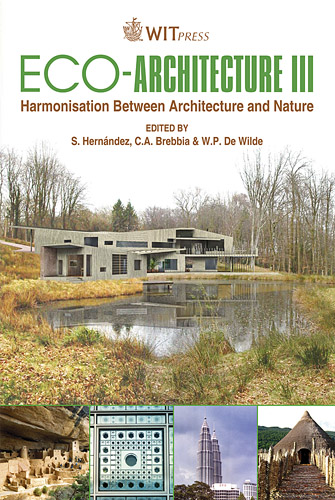Homeostasis And Perpetual Change
Price
Free (open access)
Transaction
Volume
128
Pages
11
Page Range
27 - 37
Published
2010
Size
3,172 kb
Paper DOI
10.2495/ARC100031
Copyright
WIT Press
Author(s)
C. Domin & L. Medlin
Abstract
Historically, we have built to overpower nature with minimal concern for environmental impact. The Solar Energy Efficient Dwelling: SEEDpod prototype is intended to respond to and advantageously interact with the forces of nature and the unique characteristics of each project site. These include the sun – utilized to create electricity, heat water/air and provide day lighting; water – harvested for domestic needs and irrigation of edible plants and landscaping; and air – used for ventilation and maintaining a healthy environment. The SEEDpod provides a tool for engagement with specific microclimates and the natural environment of its location. The arid Sonoran Desert, with limited vegetation, water resources and cloud cover has a climate characterized by a year round average diurnal temperature swing of 26°F. This variable condition enables the SEEDpod to employ an environmental control strategy in which the building envelope and surrounding vegetation form a \“selective filter” that dynamically interacts with the surroundings. Establishing a homeostatic relationship becomes the premise upon which we can begin to improve the design quality, efficiency and environmental responsiveness of residential construction. Balance is achieved in this energy efficient solar prototype by dynamically interacting with energy inputs and outputs in service of climatic stability. Air exchange, humidity and thermal control, interior and exterior lighting conditions and natural resource management are integral components that are continuously engaged in order to achieve a healthy, energy-efficient, and sustainably-built environment. Keywords: ecological architecture, regional adaptation, performance based design, desert architecture, energy efficiency, materials research, thermal mass.
Keywords
ecological architecture, regional adaptation, performance based design, desert architecture, energy efficiency, materials research, thermal mass





